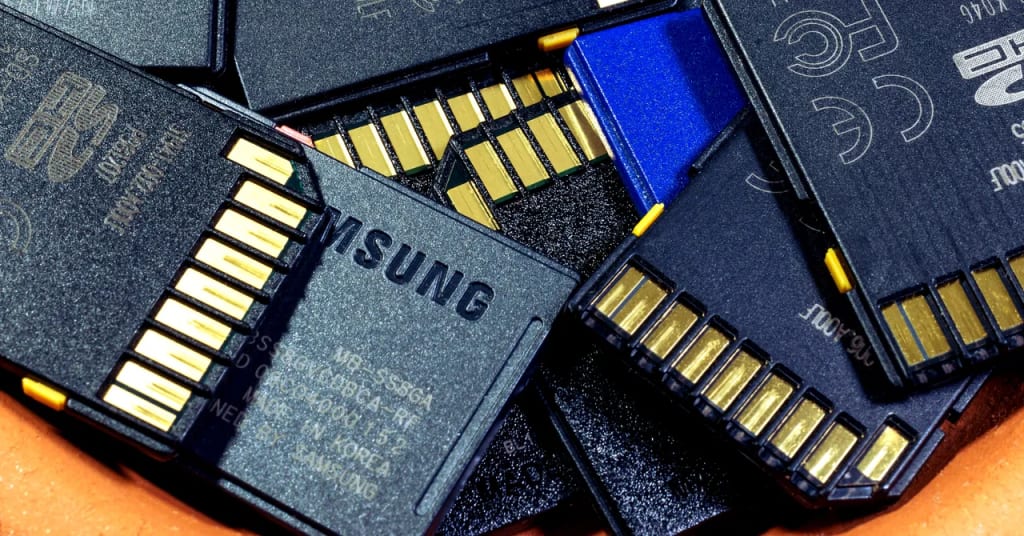
In the digital age, where we capture countless photos, record videos, and store important documents on our electronic devices, memory cards have become indispensable storage solutions. Whether it's in our smartphones, cameras, drones, or gaming consoles, memory cards provide us with the flexibility and convenience to expand storage capacity and transfer data effortlessly. In this comprehensive guide, we'll explore memory cards in depth, covering their types, features, and applications to help you make informed decisions when choosing the right memory card for your needs.
Understanding Memory Cards:
Memory cards are small, portable storage devices designed to store digital data such as photos, videos, music, and documents. They consist of non-volatile flash memory chips that retain data even when power is turned off, making them ideal for storing files in a compact and durable format. Memory cards come in various shapes, sizes, and formats, each tailored to specific devices and applications.
Types of Memory Cards:
Secure Digital (SD) Cards: SD cards are among the most common and widely used types of memory cards. They come in different variants, including SD, SDHC (High Capacity), and SDXC (Extended Capacity), with varying storage capacities ranging from a few gigabytes to several terabytes. SD cards are commonly used in digital cameras, camcorders, smartphones, and other portable devices.
- MicroSD Cards: MicroSD cards are smaller versions of SD cards, designed for use in devices with limited space, such as smartphones, tablets, and action cameras. Despite their compact size, microSD cards offer comparable storage capacities and performance to their larger counterparts, making them popular choices for mobile devices.
- CompactFlash (CF) Cards: CompactFlash cards are larger and thicker than SD cards, featuring robust construction and high-speed data transfer capabilities. They are commonly used in professional-grade digital cameras, camcorders, and audio recording equipment, where fast write speeds and reliability are essential.
- Memory Stick (MS) Cards: Memory Stick cards were developed by Sony and were once widely used in Sony digital cameras, camcorders, and PlayStation consoles. However, they have since been largely replaced by SD and microSD cards, with limited support for newer devices.
- XQD and CFexpress Cards: XQD and CFexpress cards are high-performance memory cards designed for professional photographers and videographers who require blazing-fast read and write speeds for high-resolution RAW image and 4K video recording. These cards offer exceptional reliability and durability in demanding shooting environments.
Features and Specifications:
When choosing a memory card, several key features and specifications should be considered:
- Storage Capacity: Determine the amount of storage space required based on your usage needs, considering factors such as file size, resolution, and the number of files you intend to store.
- Speed Class: Look for speed class ratings such as Class 10, UHS Speed Class, or Video Speed Class (V30, V60, V90) to ensure smooth data transfer and compatibility with your device's recording capabilities.
- File System Compatibility: Ensure compatibility with your device's file system format (FAT32, exFAT) to avoid compatibility issues and maximize storage efficiency.
- Durability and Reliability: Choose memory cards with robust construction and built-in features such as shock resistance, water resistance, and temperature resistance for added durability in challenging environments.
- Brand Reputation and Warranty: Consider purchasing memory cards from reputable brands with a track record of quality and reliability, and check for warranty coverage to protect against defects and failures.
Applications and Usage Scenarios:
Memory cards find applications in various devices and scenarios, including:
- Digital Cameras and Camcorders: For storing photos, videos, and RAW image files captured during photography and videography sessions.
- Smartphones and Tablets: For expanding storage capacity and storing media files, apps, and documents on mobile devices.
- Gaming Consoles: For downloading and storing digital games, game saves, and downloadable content (DLC) on consoles such as Nintendo Switch, PlayStation, and Xbox.
- Drones and Action Cameras: For recording aerial footage and action-packed adventures in high-definition video formats.
- Music Players and Audio Recorders: For storing and playing music files, podcasts, audiobooks, and voice recordings on portable audio devices.
Conclusion:
In conclusion, memory cards play a vital role in modern digital storage, offering portable, reliable, and high-capacity storage solutions for a wide range of devices and applications. By understanding the types, features, and specifications of memory cards, users can select the right card to meet their storage needs and ensure seamless data storage and transfer in their electronic devices. Whether you're a professional photographer, a smartphone enthusiast, or a gaming aficionado, memory cards provide the flexibility and convenience to store, share, and access digital content wherever you go.
About the Creator
Eva Adams
Writer || Social Writer || Copy Writer






Comments
There are no comments for this story
Be the first to respond and start the conversation.